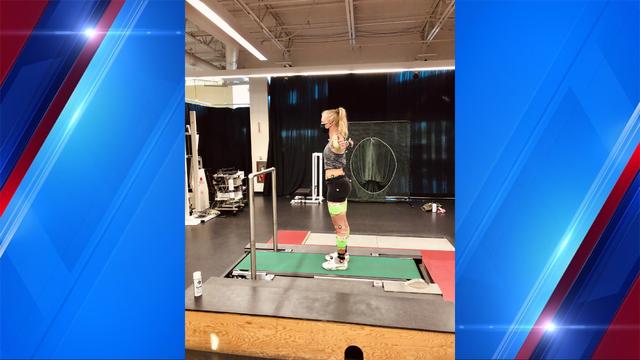MURRAY, Utah (ABC4) – Suffering an injury – should it be severe enough – may well be enough to mark the end of an athlete’s career.
In 2020, Alice McKennis Duran, a U.S. Olympic alpine ski racer, called it quits after sustaining injuries to both knees following a crash during a World Cup competition in France. And just days ago, Breezy Johnson, team USA’s top women’s downhill skier, pulled out of this year’s Olympics, also due to knee injuries. Although Johnson plans to compete in 2026, there’s no doubt that injuries are a serious threat to career longevity for professional athletes.
But when Hannah Soar injured her ankle four years ago, her career’s end didn’t end up being on the horizon. Right now, the 22-year-old Olympic mogul skier is en route to the 2022 winter Games in Beijing. But just because she recovered – and according to Josh Bullock, athletic development coordinator for U.S. Ski and Snowboard, is at the top of her game – doesn’t mean she didn’t put a lot of hard work and effort into her recovery.
Luckily though, she had a little help. Since 2014, Bill McDermott and a team of researchers at Intermountain’s The Orthopedic Specialty Hospital (TOSH), located in Murray, have been working with technology that uses 3D motion capture imaging to analyze movements and identify problem areas that aren’t visible to the naked eye.
Initially, McDermott says, the technology was mostly only utilized in a research setting. Typically, researchers recruit injured individuals to take part in studies aimed at examining ways to bring participants back to the regular daily activities they enjoyed prior to injury. But, beyond the studies being published in various peer-reviewed scientific journals, injured individuals had little chance of benefitting from the technology should they not be among the selected participants.

“These are kind of standard tools in the research world, but not so much in a day-to-day application,” McDermott explains.
In 2019, however, this began to change. The TOSH team entered into a partnership with U.S. Ski and Snowboard and began finding practical applications for their research, which officially rolled out about two years ago.
“Nothing that’s really been done, necessarily, is new,” Bullock says. “But the way that they’re used in unity is. Bill [McDermott] has taught me a lot about using biomechanics to drive performance. And Bill and I have collaborated a lot using coaching and the data that he provides to drive better performance outcomes.”
And through this partnership, these technologies have been shown to have big implications for the U.S. Olympic athletes Bullock coaches.
By using a combination of sensors placed on the athlete’s body and in-ground force sensors, specialists are able to detect imbalances, like if an athlete is favoring one leg more than the other ever so slightly. The information gleaned from this data and the practical application of it, can help eliminate chronic effects from past injuries and potentially detect re-injury before it happens.
“[Imbalances] are not something that you as a coach can actively see,” Bullock explains. “As an athlete or a patient, you can’t necessarily feel what’s happening either. Literature shows that these kinds of deficits can last out to 10 years and that predisposes you to a lot of things like reoccurrence of injury and long-term issues like arthritis.”
The practical application of this technology is groundbreaking because, in the past, Soar said in a press release, testing for deficiencies was time-consuming and labor-intensive, and sometimes didn’t provide the most timely answers. Her experience at TOSH, however, has been different. She says her treatment there is part of the reason why she is going to the Games in tip-top shape.
“After my first evaluation, the sport science team at TOSH discovered I was favoring one side and I didn’t know it,” she explains. “This is the first year I haven’t felt any residual effects from [my knee injury]. Seeing the huge amount of data, combined with new training ensures my body is working efficiently because in this sport, winners are detected by milliseconds.”
And Olympians aren’t the only ones who can benefit from this technology application. Everyone from dancers, runners, and your grandma has the potential to improve overall health, quickly recover from injuries, and avoid the potential for re-injury in the future.
At TOSH, patients can use the imaging lab to inform the work they are doing with their physical therapists and doctors. The more detailed and thorough look at a patient’s injury provides added reassurance when doctors give the go-ahead to resume certain activities that were restricted during the injury period.
“What the technology allows us to do are functional measurements that were not previously available to a clinician who would be testing by the naked eye,” McDermott says. “So what that does is that adds a large amount of confidence to a clinician in saying: ‘We’re now confident at a very, very detailed level on how your joints are moving and how your muscles are coordinating force and torque and power and now we’re confident you can get back safely to your activities.’”




